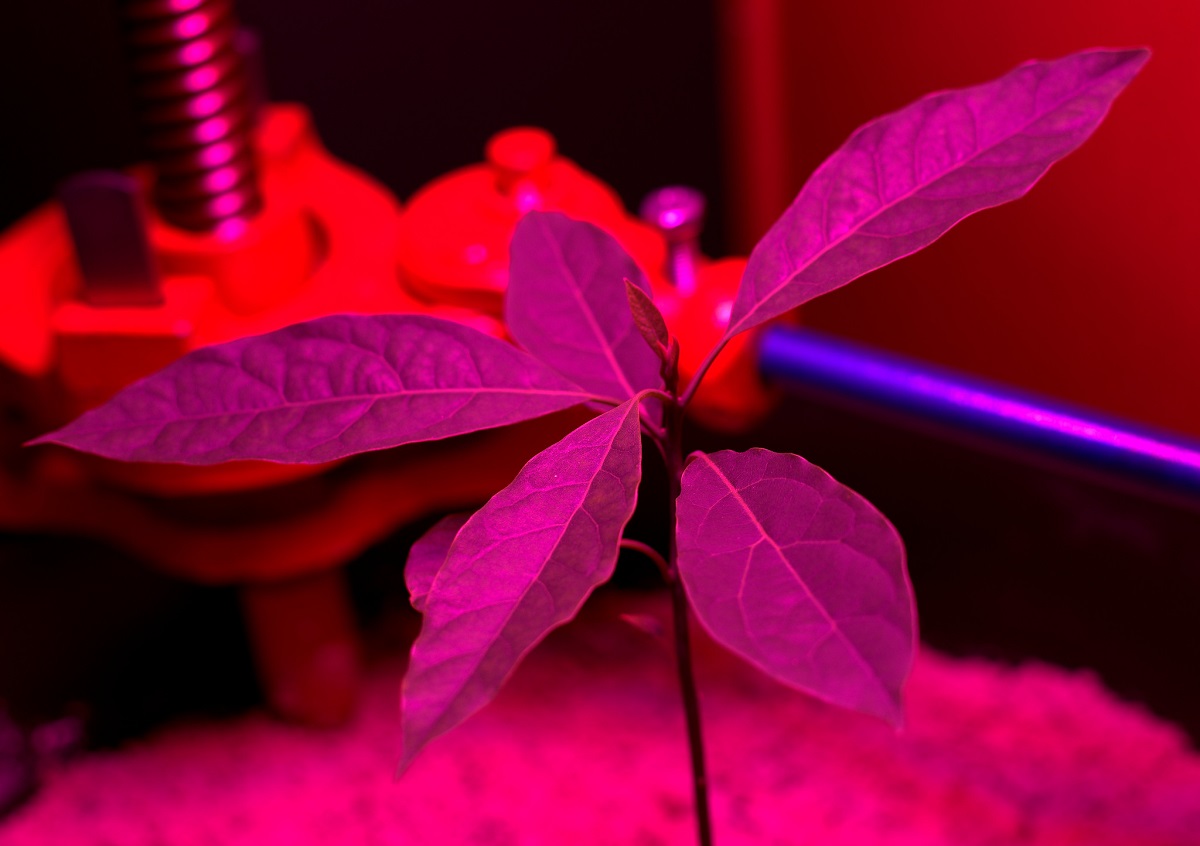In this contributor article, Luis Rivera of Advanced LED Lights stops by to talk about the future of the LED market for investors with information on the current market as well as what the future has in store!

The following is an article produced by a contributing author. Growers Network does not endorse nor evaluate the claims of our contributors, nor do they influence our editorial process. We thank our contributors for their time and effort so we can continue our exclusive Growers Spotlight service.
Modern times, advanced technologies, better solutions. Particularly when it comes to horticulture, the LED lighting market is rapidly expanding. By providing efficient and cost-effective solutions, LED grow lights are considered the future of indoor farming. If you have been searching for a valid reason of why and how you should invest in LED grow lights, we have a few ideas for you. Keep reading to learn about this fast-growing industry in the horticulture field.

Horticultural Lighting Market
Solving problems of indoor farming for many years, a lot of artificial lighting solutions are currently available for the indoor farming society. The traditional ones still hold a significant percentage of the whole market share, but this is about to change. Needless to say, LED grow lights are revolutionizing the progressive horticultural lighting market.
Due to the high demand and sustainability, it is now the perfect time to invest in the best LED grow lights. With the current market state and the predicted growth rate, the future of LED lighting has never been brighter. Recent evaluations and insights indicate a drastic increase in the revenue of the companies investing in LED grow technology.
The modern yield-increase oriented farmers and hobbyists are following this technological trend. It is more likely for them to buy LED lights for their indoor agriculture instead of traditional lightings. Even though high-pressure sodium and fluorescent lamps are still in the game, the LED’s steadily escalating demand is infiltrating the market for good.
Benefits of LED Grow Lights
In comparison with other horticulture lighting solutions, LED grow lights do have an advantage.
Fully Controlled Environment
No more dependence on sun, weather or any other external impacts. With LED lights farmers can grow the perfect crop under a fully customized environment.
- Better Quality: By managing specifications (like temperature, shadowing, glaring and light spectrum color separation), the artificial environment can be properly adjusted to the needs of each plant and the impact is amazing. With LEDs you can promote the flowering and fruit ripening process, as well as enhance the taste and color of your crop. Conventional farmers and hobbyists buy LED grow lights to deliver a higher quality produce in a long-term period.
- Higher Quantity: LED lights boost the ripeness of plants and stimulate them to grow much faster than usual. The control over the plant growing conditions quickly leads to a significant yield increase and extend the harvest season.
- Year-Round Harvest Season: Unfortunate weather conditions, seasonal temperatures or drought, and restricted sun supply are no longer considered horticultural problems. With solutions like LED grow lights the harvest season is throughout the whole year. Replacing the Sun with an artificial source turns out to be the best decision ever made by indoor and greenhouse cultivators.
Application
With a wide range of flexibility, LED grow lights are suitable for greenhouse, vertical and indoor farming. The full vegetation scope includes proper fruit, vegetable, floriculture and cannabis cultivation.
Accessibility
In a world with extensive access to internet, the consumer can easily buy LED lights online. It is remarkably easy to invest in LED grow lights, as well as to sell them. The web is full with useful information and shared knowledge that can successfully guide any consumer or an investor, like this informative article.
Cost Effectiveness & Eco-Orientation
When it comes to horticulture, LED grow lights might not always be the cheapest initial investment. But the low maintenance costs, low heat emission and energy saving properties make the LED solution worth it in the long run. Bills are noticeably reduced and the carbon footprint is decreased.
Trends in LED Grow Lights
The artificial LED grow lighting is relatively new to the horticulture field. In the past few years it has already proven to be an efficient solution on the market. With all the benefits of LED grow lights, the conventional indoor growing will only continue the positive trend of quality improvement.
Innovative Growing
Thanks to the development of LED grow lights, the indoor vertical growing is peaking. Weather conditions are no longer affecting the crops. Fewer pesticides and chemicals are used in the horticulture since the danger of pests indoor is not that high.
Water Resistance
Within recent years, the LED technology was improved to the point when humidity was no longer an issue. Water resistant LED grow lights are now available.
No Fan
Say hello to the future with grow lights with no cooling fans. Noise is eliminated, as the best LED lights on the market do not have fans thanks to advanced innovation.
Light Spectrum
The other types of artificial lightings are pretty limited when it comes to the light spectrum. This is where LED grow lights are the perfect fit for any plant’s needs. With a wide range of available colors, LED lights can be set and accustomed according requirements of each individual plant.
Competition Influence
The highly competitive field of LED grow light companies is stimulating the business. New technology is being researched and developed quicker than ever, trying to improve upon the previous LED innovations.
Cost Effect
While granting better results for the horticultural farming, the prices of lighting products are slowly but consistently going down. This trend is evidently making LED lights more affordable than ever.
The Future of LED Grow Lights
It is important to invest in a supplemental lighting technology that is not only efficient and time-saving, but also eco-friendly. Upon the latest trends, many agriculture companies and entrepreneurs are willing to invest in the best LED grow lights on the market.
While the advantages of LED grow lights continue to be superior to the traditional growing methods, an even brighter future is ahead for this revolutionary technology. Through constant innovation, the next generations of artificial lighting are expected to improve the sufficiency and effectiveness of LED grow lights even more.
As the technology world continues to develop, so will the modern-day indoor plant cultivation. Being highly efficient, cost-effective and environmentally friendly, LEDs are about to light our way into the future.
Growers Network would like to thank Luis Rivera and Advanced LED Lights for taking the time to contribute this article. What did you think? Do use LEDs? Do you agree with the advantages mentioned here? Fill out the survey below and let us know or better yet, join our forum and start a conversation. It's easy! Just click on one of the "Join Now" buttons on this page. Hope to see you there!
Want to check some more LEDs? Click here!
10 Best Gift Ideas for Cannabis Connoisseurs and Growing Aficionados (2022)
December 7, 2022Developing and Optimizing a Cannabis Cultivation System
December 14, 2021Dealing with Insomnia: How Can CBD Help?
December 10, 2020Your Guide to Sleep and CBD
December 7, 2020
Do you want to receive the next Grower's Spotlight as soon as it's available? Sign up below!

Do you have any questions or comments?

About the Author
Luis has 20+ years of experience in global market expansion, business development, mergers and acquisitions, business re-engineering, finance and investor relations of software companies. He is passionate about technology, spectral science, indoor farming, food production, automation, and more. Since 2015 he's been the president of Advanced LED Lights, a leading LED grow lights manufacturer based in Hiwasse, Arkansas. When not at work, Luis enjoys swimming, yoga, as well as growing grapes and flowers in Sonoma, California.